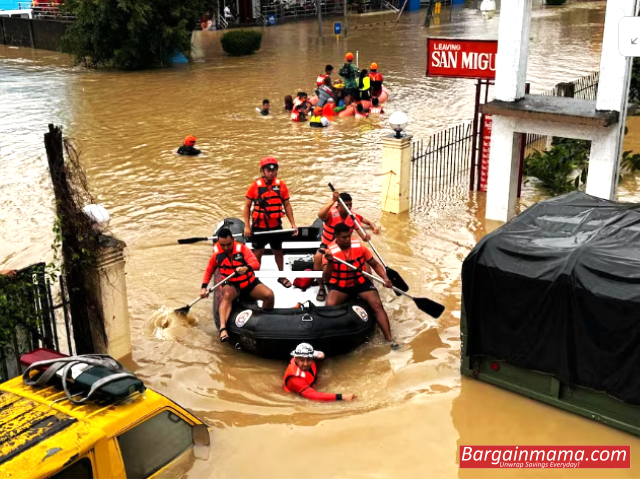A devastating weather system, Tropical Storm Trami, has wreaked havoc across the Philippines, resulting in over 126 casualties – 85 confirmed deaths and 41 missing persons. President Ferdinand Marcos Jr. confirmed on Saturday that numerous regions remain cut off from rescue teams as emergency operations continue.
Devastation and Recovery Operations
Though Tropical Storm Trami departed Philippine territory on Friday, it left behind scenes of extensive destruction. Talisay, located in Batangas province, bore some of the heaviest impact. The village of Sampaloc witnessed tragic scenes as mudslides and flooding buried locals beneath debris and vegetation. The community’s grief is visible in the row of white coffins containing recovered victims.

Search and rescue teams, equipped with heavy machinery and canine units, continue their grim task of locating missing individuals. One particularly poignant moment involved a father identifying his 14-year-old daughter’s remains as they were recovered from the disaster site.
Record-Breaking Rainfall
During his inspection of affected areas, President Marcos highlighted the unprecedented nature of the rainfall, with some locations experiencing two months’ worth of precipitation in just 24 hours. This overwhelming volume of water exposed critical weaknesses in existing flood control systems.
The President emphasized that rescue operations remain ongoing, noting that substantial flooding continues to hamper access to many affected areas.
Scale of Impact
The storm’s effects reached over 5 million residents, forcing nearly 500,000 people to evacuate to more than 6,300 emergency shelters. Authorities implemented a three-day closure of schools and government offices across Luzon, the country’s largest island. Inter-island ferry services were suspended, leaving thousands stranded.
At a Saturday emergency Cabinet meeting, officials discussed concerns about Trami potentially reversing course due to high-pressure systems over the South China Sea. The storm is currently projected to impact Vietnam this weekend, barring any directional changes.
Climate Change and Future Preparedness
The Philippines typically experiences about 20 typhoons and storms annually due to its location. These events, intensified by climate change, often trigger severe flooding and landslides. In response, President Marcos has announced plans for a major flood control infrastructure project to better protect against increasingly severe weather patterns.
Recovery Begins
Saturday brought improved weather conditions, allowing initial cleanup efforts to commence. Local authorities have begun clearing debris and working to restore essential services, though full recovery will require substantial time and resources.
The disaster evokes memories of 2013’s Typhoon Haiyan, which claimed over 7,300 lives and caused massive destruction. While the Filipino people demonstrate remarkable resilience, they continue to face the recurring challenge of rebuilding after powerful storms.



